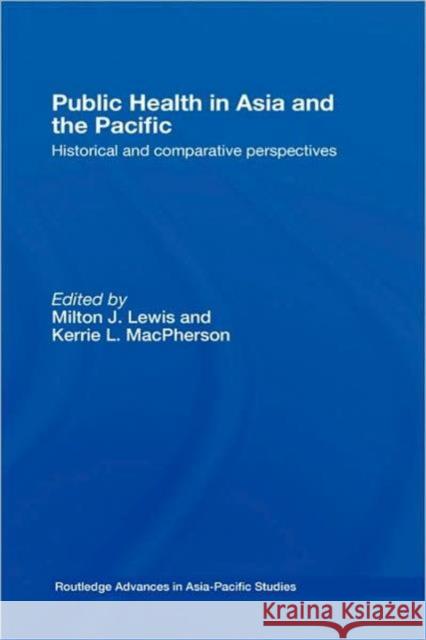Public Health in Asia and the Pacific: Historical and Comparative Perspectives » książka
Public Health in Asia and the Pacific: Historical and Comparative Perspectives
ISBN-13: 9780415359627 / Angielski / Twarda / 2007 / 304 str.
Public Health in Asia and the Pacific: Historical and Comparative Perspectives
ISBN-13: 9780415359627 / Angielski / Twarda / 2007 / 304 str.
(netto: 518,70 VAT: 5%)
Najniższa cena z 30 dni: 528,93 zł
ok. 16-18 dni roboczych.
Darmowa dostawa!
The Asia-Pacific region has not only the greatest concentration of population but is, arguably, the future economic centre of the world. Epidemiological transition in the region is occurring much faster than it did in the West and many countries face the emerging problem of chronic diseases at the same time as they continue to grapple with communicable diseases. This book explores how disease patterns and health problems in Asia and the Pacific, and collective responses to them, have been shaped over time by cultural, economic, social, demographic, environmental and political factors. With fourteen chapters, each devoted to a country in the region, the authors take a comparative and historical approach to the evolution of public health and preventive medicine, and offer a broader understanding of the links in a globalizing world between health on the one hand and culture, economy, polity and society on the other. Public Health in Asia and the Pacific presents the importance of the non-medical context in the history of human disease, as well as the significance of disease in the larger histories of the region. It will appeal to scholars and policy makers in the fields of public health, the history of medicine, and those with a wider interest in the Asia-Pacific region.
The Asia-Pacific region has not only the greatest concentration of population but is, arguably, the future economic centre of the world. Epidemiological transition in the region is occurring much faster than it did in the West and many countries face the emerging problem of chronic diseases at the same time as they continue to grapple with communicable diseases.
This book explores how disease patterns and health problems in Asia and the Pacific, and collective responses to them, have been shaped over time by cultural, economic, social, demographic, environmental and political factors. With fourteen chapters, each devoted to a country in the region, the authors take a comparative and historical approach to the evolution of public health and preventive medicine, and offer a broader understanding of the links in a globalizing world between health on the one hand and culture, economy, polity and society on the other.
Public Health in Asia and the Pacific presents the importance of the non-medical context in the history of human disease, as well as the significance of disease in the larger histories of the region. It will appeal to scholars and policy makers in the fields of public health, the history of medicine, and those with a wider interest in the Asia-Pacific region.











